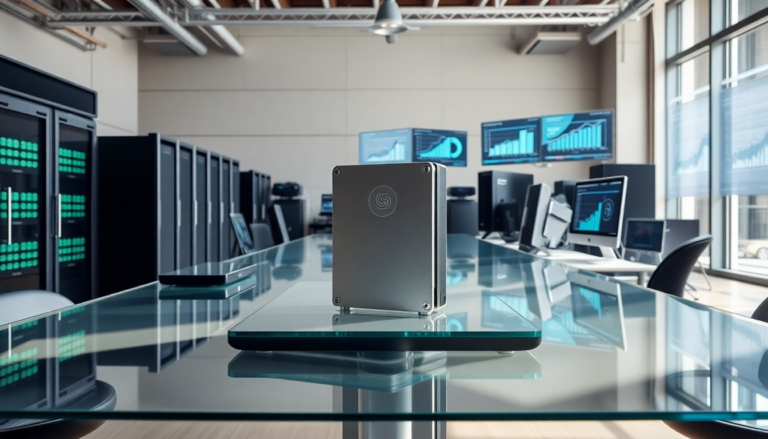Argomenti trattati
Seagate Technology has set its sights on a groundbreaking achievement in the realm of data storage, aiming to launch a 100-terabyte hard disk drive (HDD) by the year 2030. This bold assertion comes from the company’s Chief Commercial Officer, BS Teh, during a recent interview with CNBC, where he highlighted the increasing demand for storage solutions driven by advancements in artificial intelligence (AI) and high-performance computing (HPC). The ambitious goal of reaching such a capacity is not merely a corporate milestone; it reflects the pressing needs of a rapidly evolving digital landscape.
Understanding the technology behind Seagate’s HDDs
The current champion in Seagate’s lineup is the Exos Mozaic 3+, boasting a capacity of 36TB, but the trajectory towards larger storage solutions is evident. The Mozaic series employs innovative heat-assisted magnetic recording (HAMR) technology. This technique briefly heats the recording surface to reduce the energy needed to write data, significantly enhancing storage density. With this advancement, Seagate has successfully produced glass data platters, capable of holding up to 6TB each. However, while this sets the theoretical limit at 60TB, the company’s roadmap indicates that the immediate future may not yet support these higher capacities.
The roadmap to 100TB and beyond
Seagate’s plans, as outlined in earlier statements, suggest that the next iteration, the Mozaic 4+, is expected to deliver HDDs exceeding 40TB by 2026, followed by the Mozaic 5+ platform aiming for 50TB by 2028. This trajectory has raised eyebrows, particularly given the stark contrast to their previous ambitions from 2017, which projected 50TB drives well before the end of this decade. The skepticism surrounding the 100TB claim is understandable, especially since the current plans appear to lack a clear pathway to achieving such a dramatic increase in storage capacity by the proposed deadline.
Market demands driving innovation
The surge in demand for data storage is primarily fueled by the burgeoning sectors of AI and HPC, both of which require vast amounts of data to operate effectively. Teh emphasizes that meeting this demand is crucial for the industry. According to him, there isn’t any existing technology capable of delivering the required storage capacity to keep pace with market growth. This assertion underscores the urgency for innovation in storage technology.
Energy efficiency considerations
A critical aspect of Seagate’s plans also revolves around energy efficiency. As the AI sector increasingly consumes energy, the company recognizes the need for sustainable practices in their production processes. Teh has stated that the design of their products aims to reduce power consumption per terabyte. This not only helps in lowering operational costs for data centers but also aligns with the growing emphasis on renewable energy sources in tech manufacturing. Integrating such energy-efficient designs will be pivotal as businesses seek to balance performance with sustainability.
Challenges and skepticism ahead
While Seagate’s ambitions are undoubtedly impressive, there remains a level of skepticism about their ability to meet these goals by the 2030 deadline. The tech industry has witnessed numerous instances where companies have overpromised and underdelivered on ambitious storage capacities. As Seagate continues to innovate, the real test will be whether they can consistently produce drives that not only meet market demands but also align with their proposed timelines.
Conclusion
The journey towards a 100TB HDD by 2030 is fraught with challenges, but it also represents an exciting frontier in storage technology. As Seagate pushes the envelope, the implications for industries reliant on data storage will be significant. Keeping an eye on their progress will not only provide insights into the future of hard drives but also the evolving landscape of technology as a whole.

